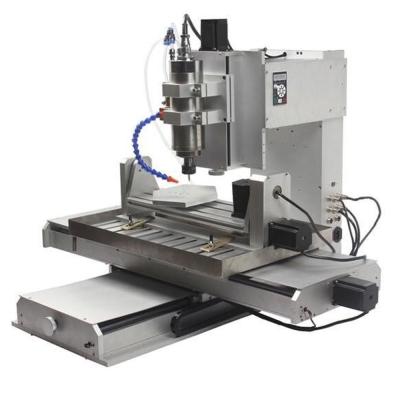3 Axis Machining Center Buying Guide: Key Considerations
-
In the world of manufacturing, precision and efficiency are critical for success. A 3 axis machining center is a valuable tool that can greatly enhance production capabilities. Whether you are a seasoned manufacturer or a newcomer to the industry, understanding the essential features and considerations when purchasing a 3 axis machining center can help you make an informed decision. This guide will explore the key factors to consider, ensuring you choose the right machine for your needs.
What is a 3 Axis Machining Center?
A 3 axis machining center is a type of CNC (Computer Numerical Control) machine that allows for milling, drilling, and tapping on three axes: X, Y, and Z. This capability enables the machine to create complex parts with high precision. The X and Y axes represent the horizontal movement, while the Z axis controls the vertical movement. This versatility makes 3 axis machining centers popular in various industries, including aerospace, automotive, and manufacturing.
Key Considerations When Buying a 3 Axis Machining Center
1. Size and Working Envelope
One of the first things to consider is the size of the machining center and its working envelope. The working envelope refers to the maximum dimensions of the workpiece the machine can accommodate. Assess your typical workpiece sizes and choose a machine that provides adequate space for your operations. Additionally, consider the machine's footprint to ensure it fits within your workshop layout.
2. Spindle Speed and Power
Spindle speed and power significantly influence a machining center's performance. The spindle speed determines how fast the cutting tool rotates, impacting the material removal rate and surface finish. Higher spindle speeds are typically better for softer materials, while lower speeds are ideal for harder materials. Power is also crucial; a more powerful spindle can handle tougher materials and provide better cutting performance. Ensure that the specifications match the types of materials you plan to work with.
3. Control System
The control system of a machining center is critical for ease of use and functionality. Most modern machines come equipped with user-friendly CNC controls, which allow for intuitive programming and operation. Look for a control system that supports G-code programming and has features like conversational programming, which can simplify the setup process. Additionally, consider the availability of training and support for the control system, as this can affect your team's ability to operate the machine efficiently.

4. Feed Rates and Acceleration
Feed rates refer to the speed at which the cutting tool moves through the material, while acceleration defines how quickly the machine can change direction. Both parameters affect productivity and part quality. Higher feed rates can lead to faster production but may sacrifice precision. Evaluate the feed rates and acceleration capabilities of the machining center to ensure they align with your production requirements.
5. Tooling and Tool Change System
A machining center's tooling options and tool change system are essential for efficiency. Look for machines that support a variety of tool types, including drills, end mills, and taps. Additionally, consider the tool change mechanism—automated tool changers can significantly reduce downtime by allowing for quick tool swaps during production runs. The number of tools the machine can hold also plays a role in flexibility, so assess your tooling needs before making a decision.
6. Precision and Accuracy
Precision is paramount in machining operations. When selecting a 3 axis machining center, review its accuracy specifications, including positional accuracy and repeatability. Look for machines that offer high precision in their specifications, as this will impact the quality of the finished parts. It's also beneficial to check for any certifications or standards the machine meets, such as ISO or ASTM.
7. Maintenance and Support
Regular maintenance is crucial for the longevity and performance of your machining center. Investigate the manufacturer’s maintenance recommendations and support options. Some manufacturers offer comprehensive service contracts, while others provide limited support. Consider the availability of spare parts and the ease of servicing the machine to minimize downtime in your operations.
8. Budget and Total Cost of Ownership
Finally, your budget is a significant consideration when purchasing a 3 axis machining center. While it may be tempting to go for the lowest initial cost, consider the total cost of ownership, which includes maintenance, tooling, energy consumption, and potential downtime. Investing in a higher-quality machine with better features may provide greater long-term value, leading to improved productivity and profitability.
Conclusion
Choosing the right 3 axis machining center is a crucial decision that can significantly impact your manufacturing capabilities. By considering factors such as size, spindle speed, control systems, feed rates, tooling options, precision, maintenance, and budget, you can make an informed choice that aligns with your operational needs.
